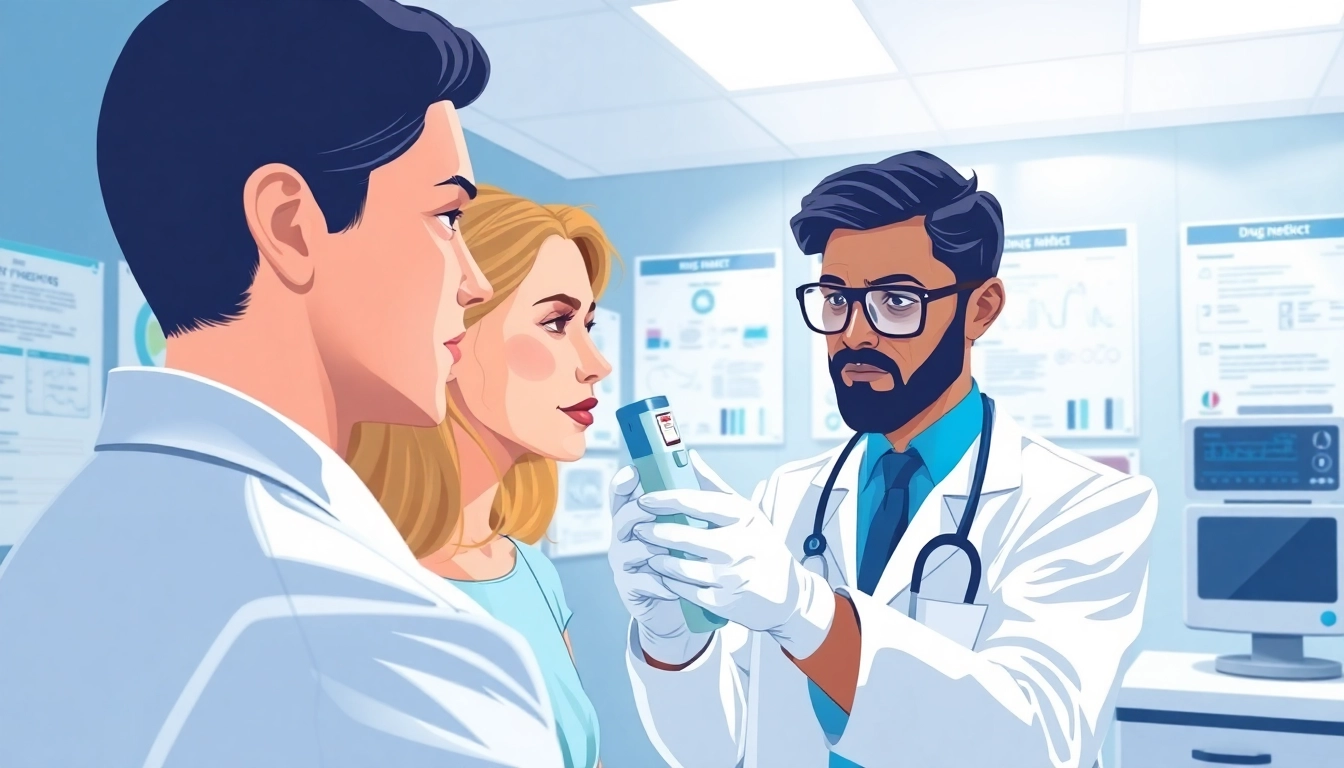What is a Drug Impairment Test?
In an era where safety and compliance are paramount in sectors like transportation, construction, and public service, the drug impairment test has emerged as a crucial tool. These tests are specifically designed to assess whether an individual is under the influence of drugs, which can severely impair their ability to perform tasks that require concentration and coordination.
Overview of Drug Impairment Testing Methods
Drug impairment tests come in various forms, each with its own methodology to assess drug influence. The most common methods include:
- Breath Testing: Primarily used for alcohol testing but increasingly adapted for certain drugs like THC, breath analysis can offer quick results.
- Urine Testing: This method identifies the presence of drugs in the user’s system but doesn’t necessarily confirm impairment at the time of testing.
- Saliva Testing: Increasingly popular due to its non-invasive nature, saliva tests are effective in detecting recent drug use and, in some cases, can correlate with impairment.
- Blood Testing: This is the most accurate method but also the most invasive. It’s often used in situations that involve accidents or emergencies.
- Field Sobriety Testing: Officers may use these tests during traffic stops to assess impairment through physical tasks that gauge coordination, balance, and concentration.
Importance of Accurate Drug Testing
The stakes of drug impairment testing are incredibly high. An accurate test is essential not just for the safety of the individual taking the test but also for the protection of others. In environments where safety is critical, such as construction sites or while operating heavy machinery, even minor impairment can lead to disastrous accidents. Thus, reliable testing methods protect both employees and the public from the potentially fatal consequences of impaired performance on the job.
Common Techniques Used in Drug Impairment Testing
While there is no universal standard for drug impairment testing, several techniques are widely accepted. Each method has its pros and cons:
- Standardized Field Sobriety Tests (SFST): Developed by the National Highway Traffic Safety Administration, these tests comprise a series of tasks that a person must complete to determine their level of impairment.
- Drug Recognition Expert (DRE) Evaluations: In scenarios where traditional tests show ambiguity, DREs conduct a thorough examination involving physiological checks to ascertain impairment by various drug categories.
- Electronic Drug Testing Devices: Advances in technology have led to portable devices capable of rapid drug assessments, improving the efficiency of traditional methods.
How Drug Impairment Tests Work
Drug impairment tests operate by detecting the presence of drugs and assessing the degree of impairment through either physiological indicators or behavioral analysis.
Types of Drugs Typically Tested
The range of drugs covered in impairment tests includes:
- Alcohol: Easily measurable and often combined with other drug tests.
- Marijuana: With the increased legality of cannabis, testing for tetrahydrocannabinol (THC) has become critical.
- Prescription Drugs: Opiates, benzodiazepines, and other medications that could impair function are routinely tested.
- Stimulants: Drugs like cocaine and methamphetamines, which cause significant impairment, are included in comprehensive tests.
Mechanisms Behind Impairment Detection
Impairment can be tricky to assess since the presence of drugs does not always correlate directly with impairment levels. Tests typically measure metabolites or drugs in blood or urine and use this data to infer either recent usage or potential impairment. Sensory tests gauge physical attributes like reflexes, balance, and cognition, providing a more immediate assessment of impairment.
Interpreting Test Results Effectively
Understanding test results necessitates a careful approach. Factors such as the type of drugs, individual variability in metabolism, and the method of testing all influence outcomes. Employers and law enforcement must also consider the context of testing and whether it aligns with established standards and protocols. This thorough interpretation is paramount to ensuring that testing results are useful and valid.
Legal and Workplace Considerations
The legal landscape surrounding drug impairment tests greatly impacts their implementation and interpretation.
Drug Impairment Testing Policies
Many organizations develop specific policies outlining their approach to drug testing, which typically encompass protocols for:
- Pre-employment screening.
- Random testing during employment.
- For-cause testing where employees may exhibit signs of impairment.
- Post-accident screening to determine whether drugs played a role in an incident.
Effective policies require clarity to ensure all employees understand the rules and practices, fostering a safer work environment.
Legal Standards for Drug Testing
Legal standards governing drug testing vary by jurisdiction, making it imperative for employers to remain informed about local laws. For instance:
- Consent is often required before testing, and false positives can lead to lawsuits if not handled appropriately.
- Employers must navigate ADA (Americans with Disabilities Act) implications in relation to employees undergoing treatment for addiction.
Employer Responsibilities and Employee Rights
Employers not only have a right to maintain a drug-free workplace but also bear the responsibility of protecting their employees. Key employer responsibilities include:
- Implementing fair and transparent drug testing policies.
- Conducting tests with due process and ensuring results are confidential.
- Providing resources for employees struggling with substance abuse and accommodating those seeking treatment.
Employees, in turn, have rights to privacy and to question test results or procedures that seem flawed or discriminatory.
Advancements in Drug Impairment Testing Technology
As technology progresses, so do the methods of testing for drug impairment.
Innovative Testing Solutions
Recent advancements introduce novel testing methodologies:
- Rapid Testing Devices: Innovative devices now provide immediate results, minimizing downtime and allowing for real-time decision-making.
- Apps and Digital Monitoring: Technology allows for digital tracking of impairment symptoms and patterns over time, lending insight into potential risks before they manifest.
The Role of Technology in Enhancing Accuracy
Modern technology significantly minimizes human error in testing interpretations. Enhanced algorithms analyze data from multiple indicators, improving the accuracy of assessing impairment. For instance, AI-driven models now analyze physiological cues and behavior, offering predictive insights about potential impairment.
Future Trends in Drug Impairment Testing
As stakeholders push for better safety standards, we can expect changes in drug testing approaches:
- More employers are likely to adopt portable rapid-testing solutions to react swiftly in high-stakes environments.
- Labeling and tracking systems using blockchain may manage testing documentation, providing unparalleled security and transparency.
- Increased integration of health monitoring wearables that signal impairment by tracking physical conditions in real-time.
Best Practices for Implementing Drug Impairment Testing
Effective implementation of drug impairment testing not only involves having a policy in place but also requires ongoing evaluation and adjustment.
Steps for Employers to Follow
Employers can adopt several steps to ensure effective implementation:
- Define clear objectives for the testing program.
- Engage employees in discussions about the policies to gain their buy-in and address concerns.
- Regularly review and update testing policies to reflect changes in laws and workplace culture.
Creating a Drug-Free Workplace Culture
Cultivating a drug-free culture is imperative:
- Provide training and resources to educate staff about the dangers of substance abuse.
- Establish support programs that encourage employees to seek help, fostering a supportive environment conducive to recovery.
Evaluating the Effectiveness of Impairment Tests
Regular evaluation is critical to maintain the integrity of drug testing programs. Key performance metrics include:
- Reduction in workplace incidents due to impairment.
- Frequency of false positives or negatives in test interpretation.
- Employee feedback regarding perceptions of fairness and support within the testing processes.



